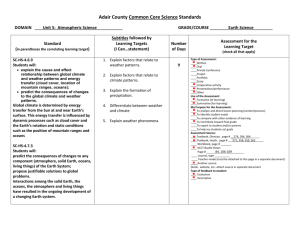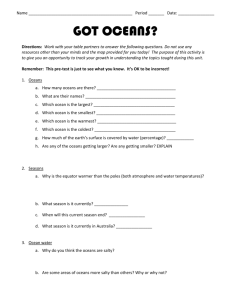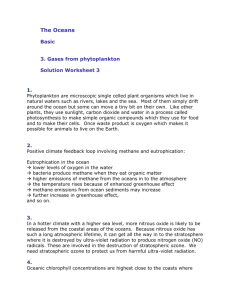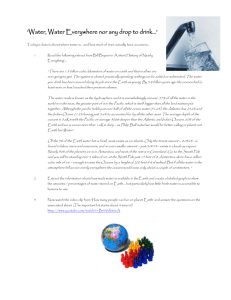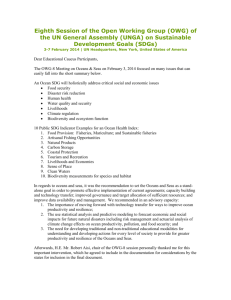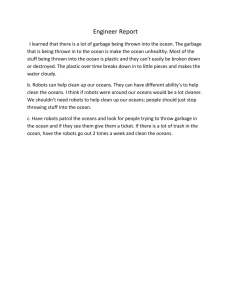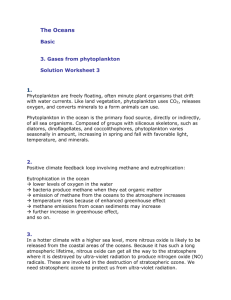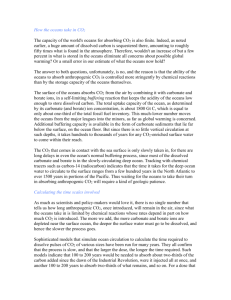15.-1-notes-Overview-of-Oceans
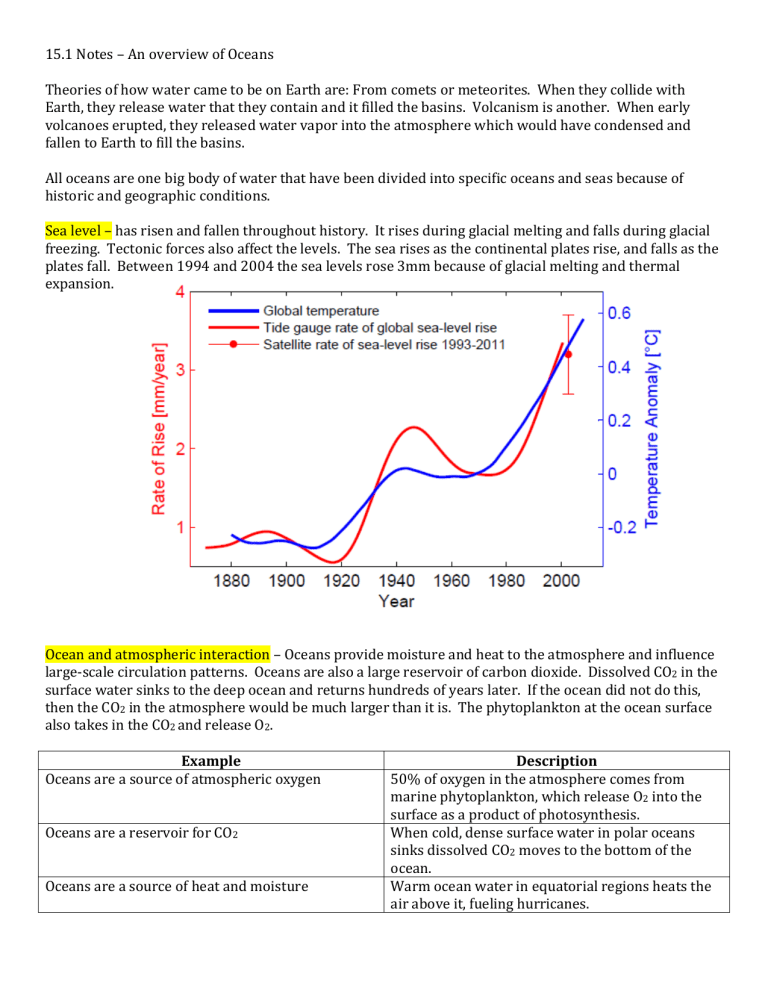
15.1 Notes – An overview of Oceans
Theories of how water came to be on Earth are: From comets or meteorites. When they collide with
Earth, they release water that they contain and it filled the basins. Volcanism is another. When early volcanoes erupted, they released water vapor into the atmosphere which would have condensed and fallen to Earth to fill the basins.
All oceans are one big body of water that have been divided into specific oceans and seas because of historic and geographic conditions.
Sea level – has risen and fallen throughout history. It rises during glacial melting and falls during glacial freezing. Tectonic forces also affect the levels. The sea rises as the continental plates rise, and falls as the plates fall. Between 1994 and 2004 the sea levels rose 3mm because of glacial melting and thermal expansion.
Ocean and atmospheric interaction – Oceans provide moisture and heat to the atmosphere and influence large-scale circulation patterns. Oceans are also a large reservoir of carbon dioxide. Dissolved CO
2
in the surface water sinks to the deep ocean and returns hundreds of years later. If the ocean did not do this, then the CO
2
in the atmosphere would be much larger than it is. The phytoplankton at the ocean surface also takes in the CO
2 and release O
2
.
Example
Oceans are a source of atmospheric oxygen
Description
50% of oxygen in the atmosphere comes from marine phytoplankton, which release O
2
into the surface as a product of photosynthesis.
Oceans are a reservoir for CO
2
Oceans are a source of heat and moisture
When cold, dense surface water in polar oceans sinks dissolved CO
2
moves to the bottom of the ocean.
Warm ocean water in equatorial regions heats the air above it, fueling hurricanes.


